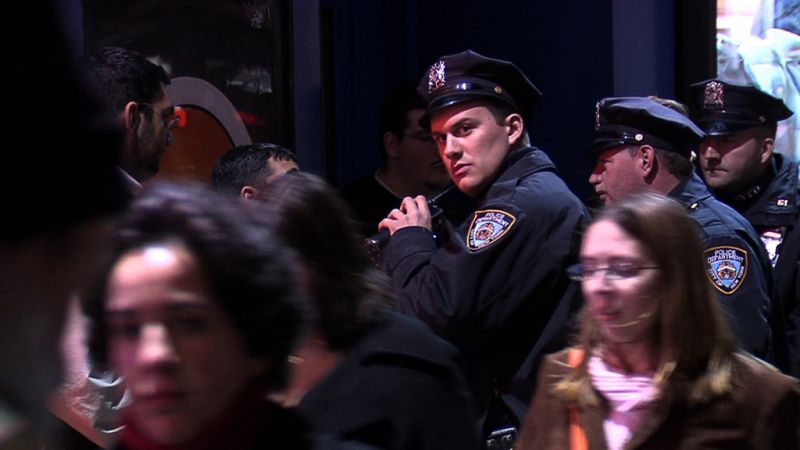Plot Point

Original format
Color
Color system
Availability
The crowded streets of New York City turn into fictive, cinematographic scenery. Provost is playing with our collective memory, its cinematic codes and narrative languages questioning the boundaries between a staged, suggested reality and authentic fiction. Although for the most part filmed with a hidden camera, Plot Point presents a highly dramatic construction with overly sophisticated images and a subtle but tangible urge in the soundtrack. The meticulousness with which Provost shoots and edits the images and sounds make Plot Point the perfect trailer for dramatized experience in our daily life - an ordinary walk on the street will never be the same again.
(Jury statement EMAF, 2008)
A divertimento for synthesizer, police cars and sirens? A portrait of an NYPD regiment, or a sketch of what happens to urban reality once coppers and dramatic music are added to an otherwise normal day in the life of city dwellers?
In Plot Point – the title playfully suggests a plot or a point that’s never really there – New York City and American copland, with its howling police cars, uniforms, ambulances and crowded streets, turns into perfect filmic scenery for a nation in fear. The film questions the boundaries of reality and fiction, the codes of cinema and the narrative tools – ‘planting’, foreshadowing, aftermath, tension curve, climax, plot point – that play with our filmic memory. Because narrative film language has us in its grip: ‘reality’ can disappear completely, making room for a cinematic cop story. ‘For real’: the film features real actions with real people as characters, living real lives. There is no set-up, there were no instructions. All were filmed with a candid camera. Provost translates ‘document’ as ‘fiction’, ‘reality’ as ‘story’.
We’ve seen it all before: people walking in the city streets, street vendors, a yellow school bus, a yellow cap, police cars, whites, blacks, Asians, Hispanics; most of them young or not so very old. Then an image from a helicopter at night, eyeing Manhattan, suggesting a looming threat or a police action planned or in progress. A heavy film score -- a mix of synthesizers and recorded street noises—emphasizes the movie’s cinematic aspect. There’s a woman who seems to be crazy or in shock until we realize the image is played backwards, alienating the representation from the represented: that woman there on an NYC street versus the one captured, featuring here in Provost’s film. Or a kinetic, frantic, neurotic cop standing, arrogant-looking, hips tilted forward, bossy hands on belt, self-assured and provocative. A short dialogue unfolds between him and a colleague, but to the viewer it’s unclear whether this is really happening diegetically or if it concerns a copy-paste dialogue from another (a ‘real’) cop movie:
“How’s it going?”
“100%. Right on schedule.”
As the film progresses, the police force gains in filmic importance. The camera zooms in on police agents’ faces and cars or details like sirens or police caps as the musical pathos swells toward but never reaches a point or climax. At the film’s end, dozens of departing police cars drive, one by one, as in a choreography, their lights flashing rhythmically, with the glum ominous music making way for a somewhat more light-hearted, repetitive, minimal synthesizer sound. We might ask ourselves how much this early 21st-century reality is a ‘preparation’ for a film, our daily lives a setting for ‘others’ – surveillance cameras, candid cameras, TV watchers and film goers – to look at. (Steve Tallon)
Prizes: Best European Film Award, Festival Du Film De Vendôme, France
Prix UIP Vila Do Conde 2007, Portugal
Nomination European Film Academy Award, Berlin
Jury Award, Imago International Film Festival, Portugal
Onda Curta Portugese Television Prize Imago Shortfilm Festival, Portugal
Special Jury Prize, International Shortfilm Festival Clermont-Ferrand. France

